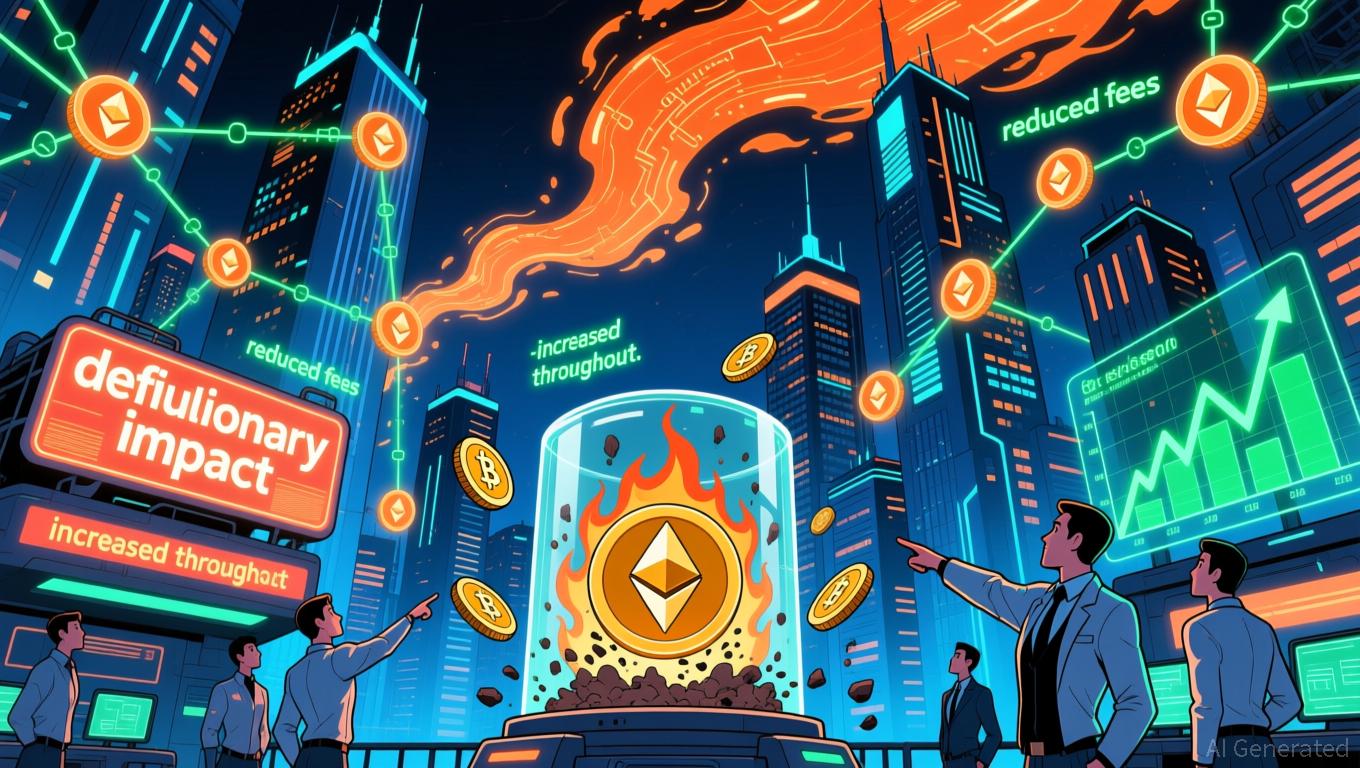European financial institutions leverage MiCA to position the euro at the forefront of digital currency innovation
- ING and UniCredit plan to launch MiCA-compliant euro stablecoins by late 2026, aligning with EU regulatory standards. - MiCA requires 1:1 reserves, transparency, and licensing, pushing U.S. firms like Tether out of the euro stablecoin market. - European banks collaborate through consortia to navigate regulatory hurdles, aiming to fill gaps left by non-compliant competitors. - EURC and similar tokens are gaining traction as trusted alternatives, with EUR-backed stablecoin supply projected to reach $2 tril

ING, UniCredit, and several other European financial institutions are gearing up to introduce euro-backed stablecoins that comply with MiCA regulations by late 2026, marking a significant development in Europe’s digital asset sector ING Drives Euro Stablecoin Launch as MiCA Spurs Banking Pivot [ 1 ]. Dutch bank
MiCA, which took effect in December 2024, requires stablecoin providers to secure licenses, hold full reserves in European banks, and comply with strict transparency standards European Stablecoin Regulations: 2025 Update [ 4 ]. These regulations have already prompted major U.S. firms like
The consortium approach demonstrates the collaborative efforts behind MiCA-compliant projects. ING’s alliance with other banks illustrates the regulatory and operational challenges of forming a joint venture under the new rules ING Drives Euro Stablecoin Launch as MiCA Spurs Banking Pivot [ 1 ]. Progress has been gradual, as participants work through board approvals and compliance requirements Dutch Banking Giant ING Reportedly Developing MiCA-Compliant Stablecoin [ 3 ]. Nevertheless, the clarity provided by MiCA has encouraged innovation, with UniCredit and other major institutions reportedly pursuing similar initiatives Stablecoin Regulations: U.S. vs EU Strategies [ 6 ]. Collectively, these efforts are intended to fill the gap left by non-compliant stablecoins and establish European banks as central players in the digital euro landscape.
The euro stablecoin sector is gaining traction as MiCA boosts both consumer confidence and institutional involvement. According to JPMorgan analysts, regulated products like EURC have outperformed less transparent options such as Tether, thanks to their compliance with reserve and disclosure rules Dutch Bank ING Said to Be Working on a New Stablecoin [ 5 ]. The EU’s regulatory drive has also led to new infrastructure, including Circle’s Circle Payments Network (CPN), which supports instant cross-border transactions using EURC and USDC ING Drives Euro Stablecoin Launch as MiCA Spurs Banking Pivot [ 1 ]. These developments are in line with the European Central Bank’s (ECB) broader objective to promote digital euro adoption, even as the official rollout faces delays.
Despite these advances, challenges persist, especially in balancing innovation with regulatory demands. While MiCA has simplified oversight, obtaining licenses and maintaining reserves remains a demanding process European Stablecoin Regulations: 2025 Update [ 4 ]. Many smaller issuers and crypto companies have exited the EU, with TRM Labs noting that only 17 firms had received MiCA authorization by mid-2025 Dutch Banking Giant ING Reportedly Developing MiCA-Compliant Stablecoin [ 3 ]. However, as established banks like
Looking forward, the euro stablecoin market is expected to expand rapidly, with global supply projected to hit $2 trillion by 2028. European banks are positioning themselves to capture a significant portion of this growth by leveraging MiCA’s regulatory structure U.S. vs. EU Stablecoin Regulation: How the Revised STABLE Act Stacks Up [ 8 ]. The ECB’s digital euro project, though delayed, is still seen as a long-term complement to private stablecoin ventures. As regulations evolve, the EU’s focus on financial stability and consumer protection stands in contrast to the U.S.’s more innovation-driven GENIUS Act Stablecoin Regulations: U.S. vs. EU (2025) [ 9 ]. This difference underscores the euro’s strategic role in shaping Europe’s digital financial landscape.
The initiatives by ING and UniCredit showcase the transformative impact of MiCA. By aligning with the EU’s regulatory goals, these banks are not only tackling compliance issues but also helping to define the future of digital finance in Europe. As the latter half of 2026 nears, the success of their stablecoins could pave the way for wider adoption, strengthening the euro’s position in the evolving global payments system.
Disclaimer: The content of this article solely reflects the author's opinion and does not represent the platform in any capacity. This article is not intended to serve as a reference for making investment decisions.
You may also like
Solar radiation reveals previously undetected software flaw in Airbus aircraft fleet
- Airbus issues emergency directive to update A320 fleet software/hardware after solar radiation-linked flight-control incident caused JetBlue's emergency landing. - EU Aviation Safety Agency mandates fixes for 6,000 aircraft, risking Thanksgiving travel chaos as airlines face weeks-long groundings for repairs. - Solar interference vulnerability, previously flagged by FAA in 2018, highlights growing software reliability challenges in modern avionics systems. - Analysts call issue "manageable" but warn of s

Khabib's NFTs Ignite Discussion: Honoring Culture or Taking Advantage?
- Khabib Nurmagomedov's $4.4M NFT collection, rooted in Dagestani heritage, sparked controversy over cultural symbolism and legacy claims. - The project sold 29,000 tokens rapidly but faced scrutiny for post-launch transparency gaps and parallels to failed celebrity NFT ventures. - NFT market recovery (2025 cap: $3.3B) highlights risks like "rug pulls" and volatility, despite celebrity-driven momentum. - Concurrent trends include crowdfunding innovations and sustainability-focused markets like OCC recyclin

Ethereum Updates Today: Fusaka Upgrade on Ethereum Triggers Structural Deflation Through L2 Collaboration
- Ethereum's Fusaka upgrade (Dec 3, 2025) introduces EIP-7918, linking L2 data costs to mainnet gas prices, boosting ETH burn rates and accelerating deflationary trajectory. - PeerDAS and BPO forks reduce validator demands while enabling scalable 100k TPS growth through modular upgrades, avoiding disruptive hard forks. - Analysts predict 40-60% lower L2 fees for DeFi/gaming, with institutional ETH accumulation and a 5% price rebound signaling confidence in post-upgrade value capture. - The upgrade creates

Bitcoin News Update: Stablecoin Growth Drives Cathie Wood's Updated Bullish Outlook on Bitcoin, Not Market Weakness
- ARK's Cathie Wood maintains $1.5M Bitcoin long-term target despite 30% price drop, adjusting 2030 forecast to $1.2M due to stablecoin competition. - She attributes market volatility to macroeconomic pressures, not crypto fundamentals, and highlights Bitcoin's historical liquidity-driven rebounds. - UK's "no gain, no loss" DeFi tax framework and firms like Hyperscale Data ($70.5M BTC treasury) reflect evolving regulatory and strategic dynamics. - Bitfarms' exit from Bitcoin mining to AI HPC by 2027 unders
